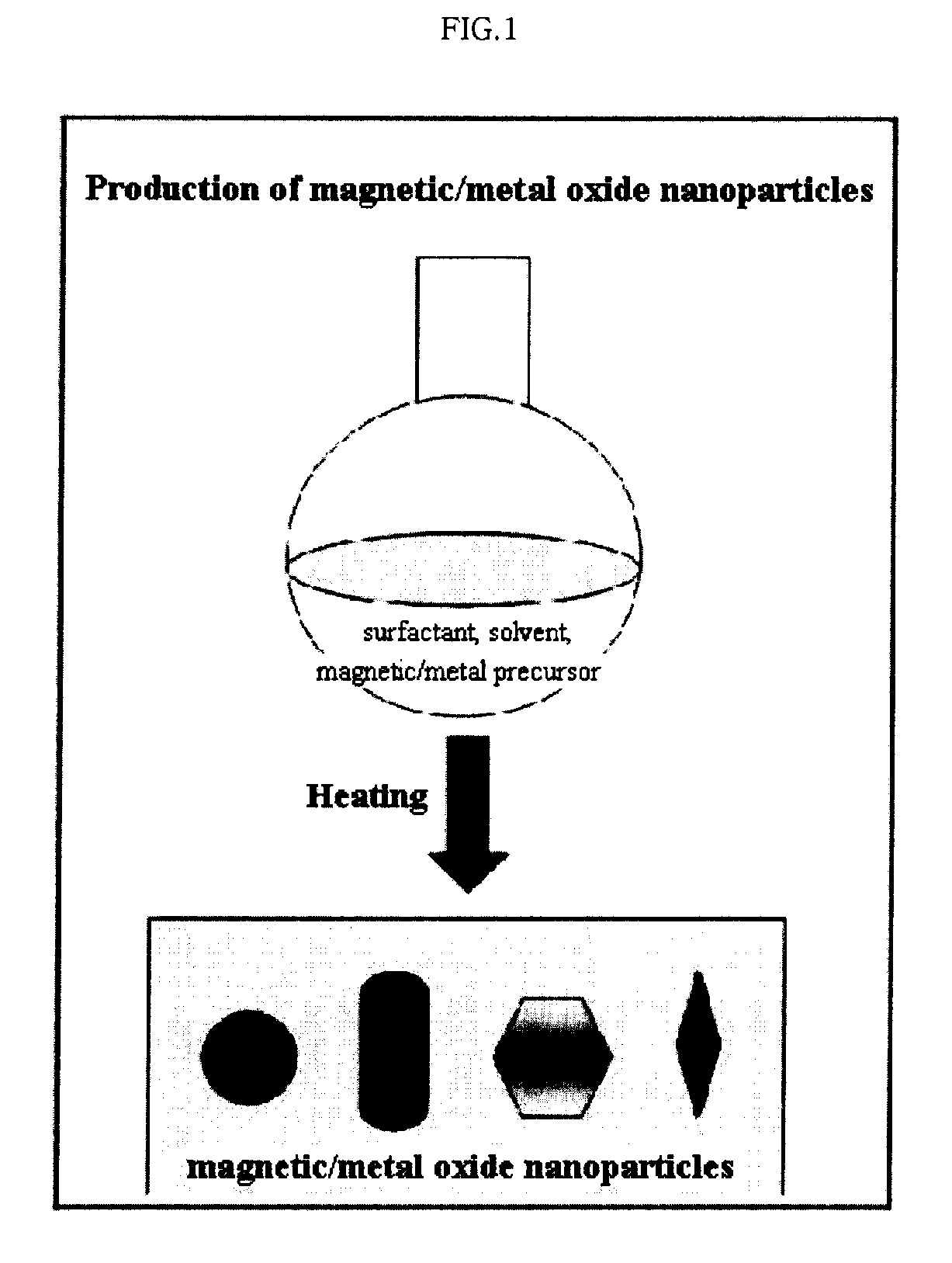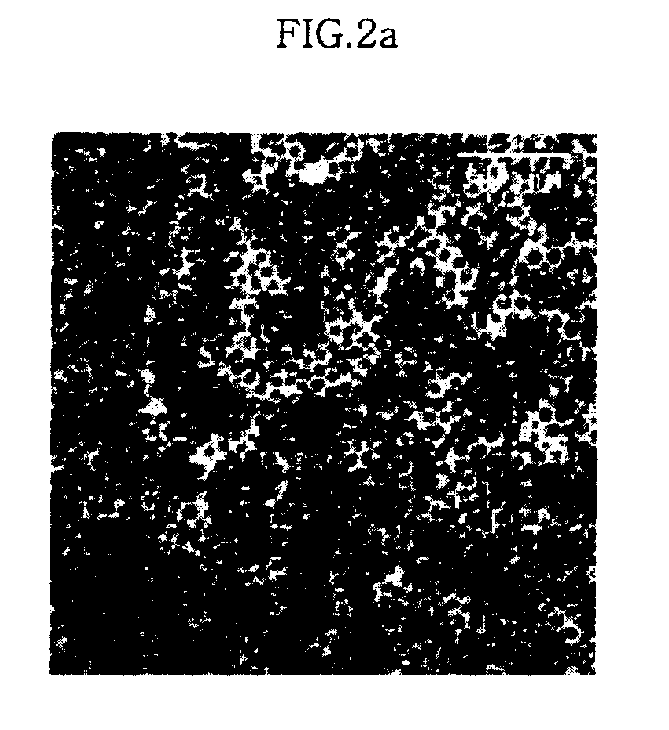Preparation Method of Magnetic and Metal Oxide Nanoparticles
a technology nanoparticles, which is applied in the direction of chromium oxide/hydrates, magnetic materials, germanium dioxide, etc., can solve the problems of reduced reaction efficiency, increased oxide nanoparticle production cost, and production of metal oxide nanoparticles according to the above methods, so as to achieve effective mass production and uniform shape
- Summary
- Abstract
- Description
- Claims
- Application Information
AI Technical Summary
Benefits of technology
Problems solved by technology
Method used
Image
Examples
example 1
Production of Iron Oxide Nanoparticles Having Various Sizes
[0054] Iron nitrate (Aldrich) was decomposed by heating in 20 ml of an octyl ether solvent (Aldrich) containing 0.1 M lauric acid (Aldrich) and 0.1 M lauryl amine (Aldrich) at 290° C. for 1 hour to synthesize iron oxide nanoparticles having the size of 6 nm. Furthermore, the procedure of synthesizing the iron oxide nanoparticles having the size of 6 nm was repeated except that the amount of solvent was set to 10 ml, thereby producing iron oxide nanoparticles having the size of 9 nm. Additionally, the procedure of synthesizing the iron oxide nanoparticles having sizes of 6 nm or 9 nm was repeated except that the amount of solvent was set to 5 ml, thereby producing iron oxide nanoparticles having the size of 12 nm.
[0055] 20 μl of solutions, which contain the iron oxide nanoparticles thus synthesized, were dropped on a carbon film-coated TEM grid (Ted pella Inc.), dried for about 30 min, and observed using an electron microsc...
example 2
Production of Manganese Ferrite (MnFe2O4) Nanoparticles
[0056] Iron nitrate (Aldrich) and manganese chloride (Aldrich) precursors were mixed in an equivalence ratio of 2:1, and reacted in 20 ml of an octyl ether solvent containing 0.1 M lauric acid and 0.1 M lauryl amine at 290° C. for 1 hour to produce manganese ferrite nanoparticles having the size of 6 nm. The manganese ferrite nanoparticles having sizes of 9 nm and 12 nm were synthesized through the same procedure as example 1 while the amount of solvent was controlled.
[0057] The synthesized manganese ferrite nanoparticles were observed using a TEM, and the results are shown in FIG. 3. FIGS. 3a, 3b, and 3c are TEM pictures of manganese ferrite nanoparticles having sizes of 6, 9, and 12 nm produced according to the present invention. From these figures, it could be seen that uniform manganese ferrite nanoparticles having the desired sizes were produced.
[0058] Saturation magnetic hysteresis depending on the size of the manganese...
example 3
Production of Cobalt Ferrite Nanoparticles (CoFe2O4) and Nickel Ferrite Nanoparticles (NiFe2O4)
[0060] The procedure of example 2 was repeated except that cobalt chloride and nickel chloride precursors (Aldrich) were used in place of the manganese chloride precursor of example 2, thereby producing cobalt ferrite nanoparticles and nickel ferrite nanoparticles.
[0061] The synthesized cobalt ferrite nanoparticles and nickel ferrite nanoparticles were observed using a TEM, and the results are shown in FIGS. 6 and 7. From these figures, it can be seen that the sizes of the particles are uniformly distributed within 9±1 nm.
PUM
| Property | Measurement | Unit |
|---|---|---|
| sizes | aaaaa | aaaaa |
| sizes | aaaaa | aaaaa |
| sizes | aaaaa | aaaaa |
Abstract
Description
Claims
Application Information
 Login to View More
Login to View More - R&D
- Intellectual Property
- Life Sciences
- Materials
- Tech Scout
- Unparalleled Data Quality
- Higher Quality Content
- 60% Fewer Hallucinations
Browse by: Latest US Patents, China's latest patents, Technical Efficacy Thesaurus, Application Domain, Technology Topic, Popular Technical Reports.
© 2025 PatSnap. All rights reserved.Legal|Privacy policy|Modern Slavery Act Transparency Statement|Sitemap|About US| Contact US: help@patsnap.com



